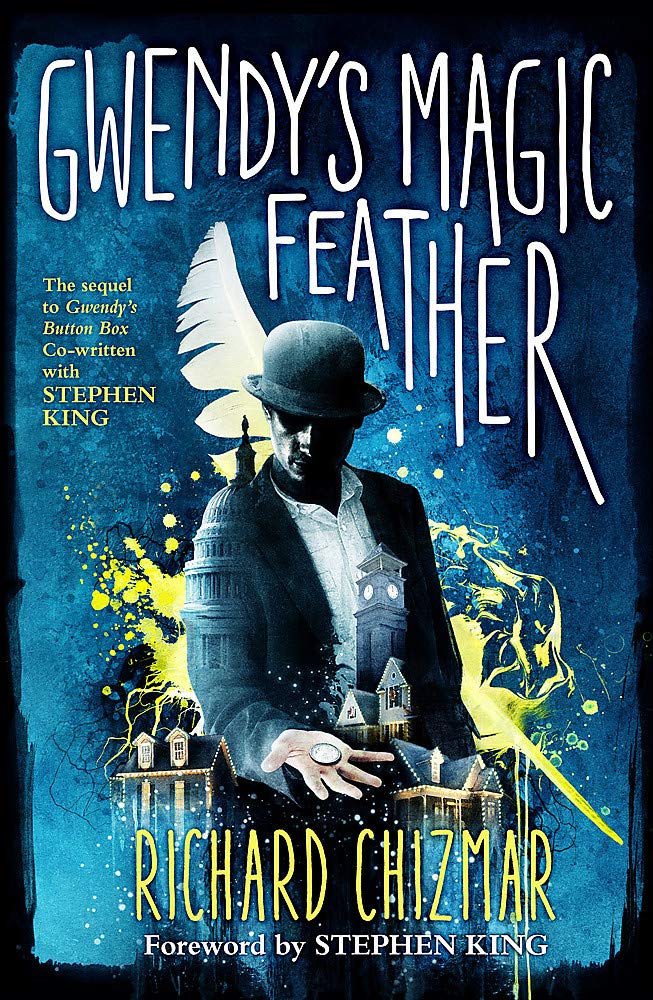Many years ago F. Paul Wilson wrote five novellas in the Sims “saga.” These novellas were published by Cemetery Dance between 2000 to 2010,. In between those dates, they were released as a novel by Tor Books in 2003. While the former novellas were limited, the novel from Tor was a mass market publication.
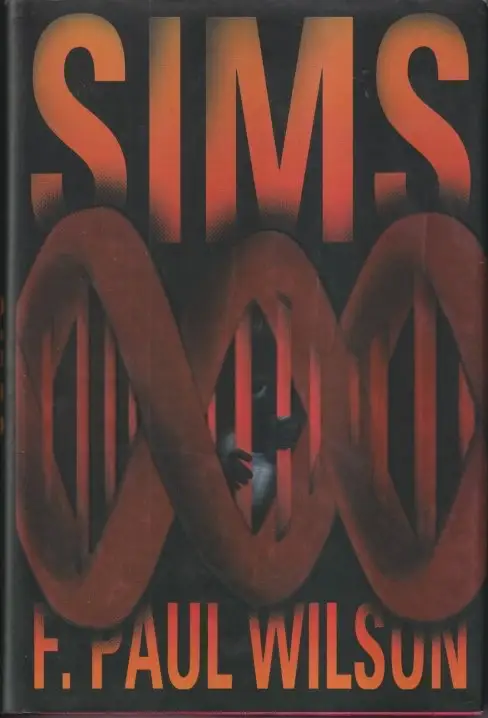
Why it took Cemetery Dance seven years after the novel was published to round out the five volumes remains a mystery to me. Each novella from Cemetery Dance was limited to 750 numbered copies, and signed by Wilson. As a Wilson fan, currently looking to fill in missing gaps of books published over the past few years, I never felt compelled to seek out these novellas, as I already had the collected set of novellas gathered in the book from Tor (inscribed to me by Wilson at the World Fantasy Convention in Austin, TX, in 2006, I think). However, when I found them listed this year from various sellers at prices well below the original listed price of $35 per book, I thought, “Why not?”
As I write this in 2024, I vaguely remember the plot of Sims, the novel. I know that I read it back then, and voted for it when it was nominated for the Prometheus Award. Over 20 years had passed since I last thought about this story. When I picked up the five individual novellas this year, I re-read them in that format. I was surprised at how little I remembered, yet also at some of the details that remained stuck in my memory.
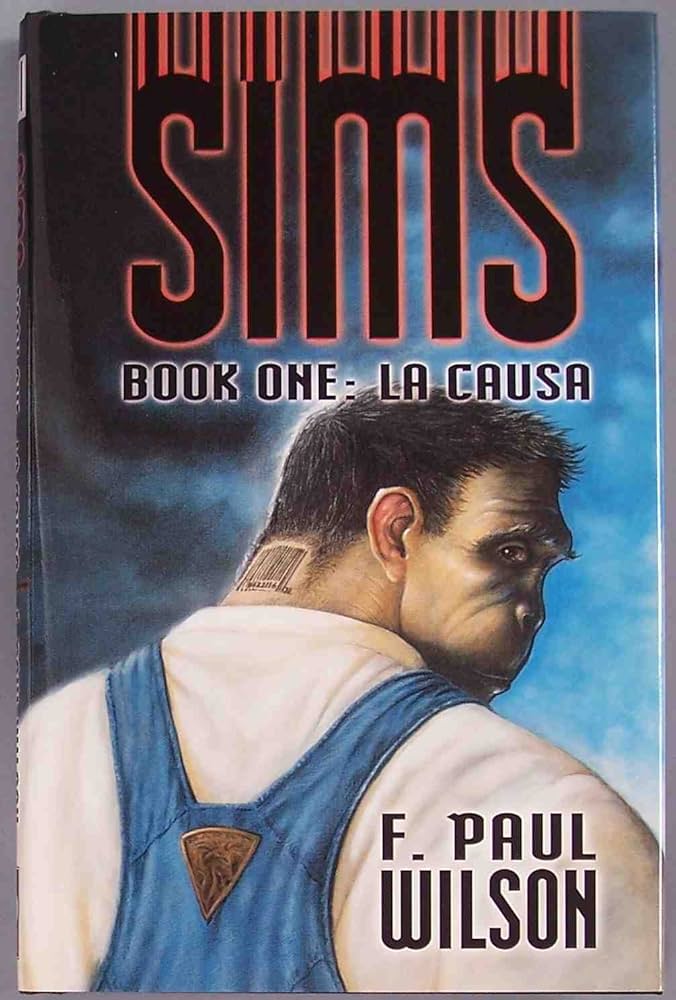
The first book, La Causa, sets the stage. The world of Sims, much like the five-book world of the LaNague Federation, is independent of Wilson’s Secret History saga. Here, genetically enhanced chimpanzees are cheap labor (more like slaves; not to dissimilar from the clones in Dydeetown World), even acting as caddies on golf courses (or worse, as we’ll see). A young lawyer, Patrick Sullivan, gets asked by some of the sims to represent them to form a labor union, and takes the case. This puts him in opposition to SimGen, the company that created and owns the sims. Their attempts to intimidate him only makes him dig in his heels harder, and he ends up embracing their cause. Meanwhile, another character, Romy Cadman, works for the government investigating research risks, while at the same time moonlights for a shadowy person trying to bring down SimGen. Her handler in this group goes by Zero, wears a mask to hide his features, and seems to have insider knowledge into the plans and workings of SimGen. At once we have multiple, yet intersecting, conflicts with many potentials.
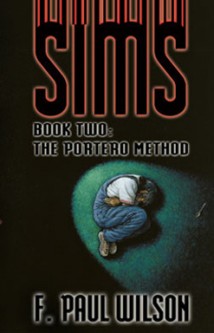
The second installment, The Portero Method, brings Sullivan closer together with Romy. Portero is the security head of SimGen, but also seems to be working for another group, one that occupies the shadows. The Portero method is harsh, brutal, and throws a major wrench in Sullivan’s unionizing attempts. It also drives into the same group as Romy and Zero, now even more determined to bring down SimGen.
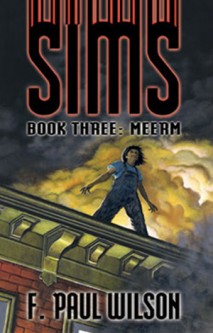
The third, Meerm, introduces a new character, and a new element to the story, one that will bring everything to a crashing climax. Meerm is another sim, on the run from a low-budget gene-lab, yet one with the potential to bring down SimGen, and the race is on to find this sim. Three groups are trying to find her: Portero’s two employers, as well as Zero’s cell.
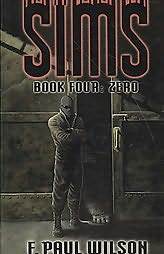
The fourth, Zero, focuses on the person behind the mask. As the prime mover against SimGen, Zero has hired both Patrick Sullivan and Romy Cadman, hiding behind a mask the entire time. We learn of his ties to SimGen, giving him inside information. The hunt for Meerm ratchets up, with multiple groups trying to find this pregnant sim.
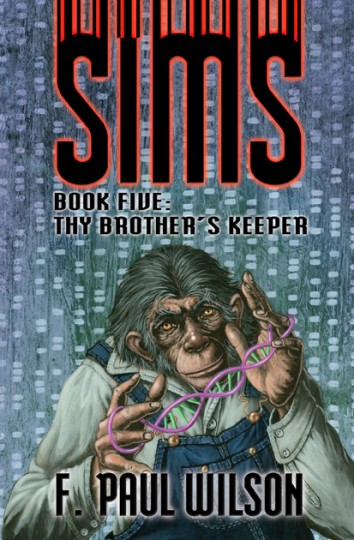
The fifth and final entry, Thy Brother’s Keeper, ties it all together. Everything erupts when we learn of Zero’s identity, and the ending is both heroic and tragic. Meerm’s baby seals the fate of SimGen, although the true origin of the sims remains a secret the public will never know. Lives are shattered, and it’s not just a happy ending for everyone. Wilson truly keeps everyone on their toes.
With this stack of books in hand, signed and numbered, each limited to 750 copies, I wonder if owning them is any different from owning the Tor edition of Sims? My Tor edition of Sims is inscribed to me by Wilson, and although all the five novellas are signed, does this equate to talking to Wilson, handing him a book and getting it returned as inscribed? On one level, it doesn’t. And yet, the Tor book was printed in thousands of copies, while the Cemetery Dance books had a much lower print run. They also contain illustrations that the Tor book edition did not. I sometimes struggle between the idea of a collector and a fan. I’m a fan of FPW, but as a collector, I’m more random and haphazard in my actions. Yet, for some weird reason, owning these five books gives me a thrill that the Tor Books edition never gave me. Why is that? Is that some innate human behavior, or just a focused aspect of some obsessive compulsive disorder?



